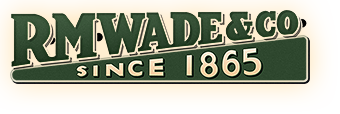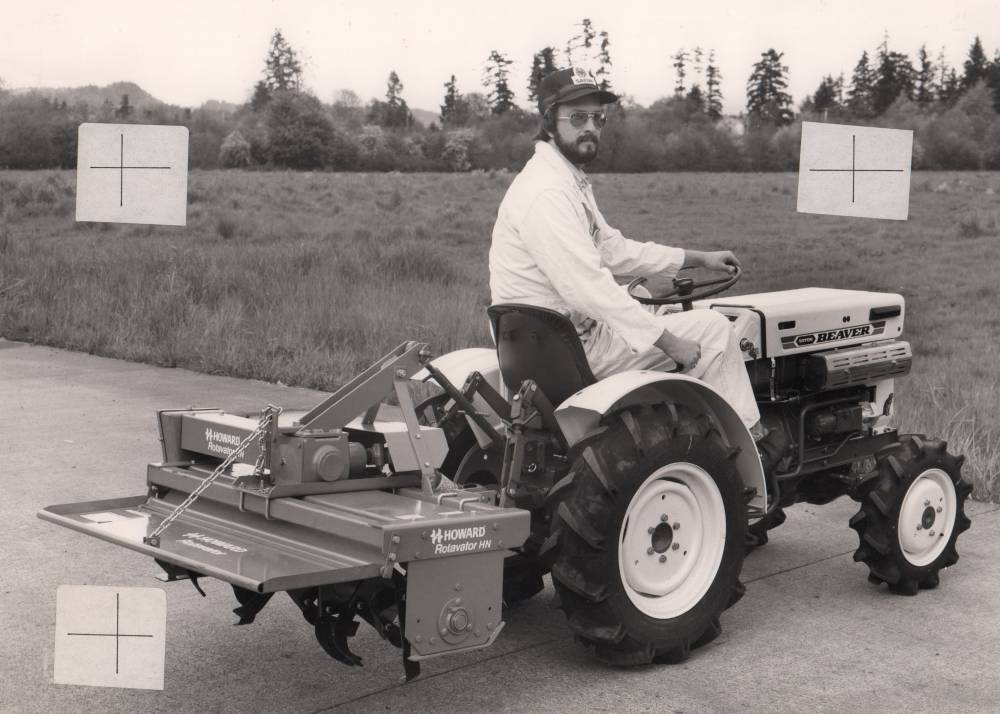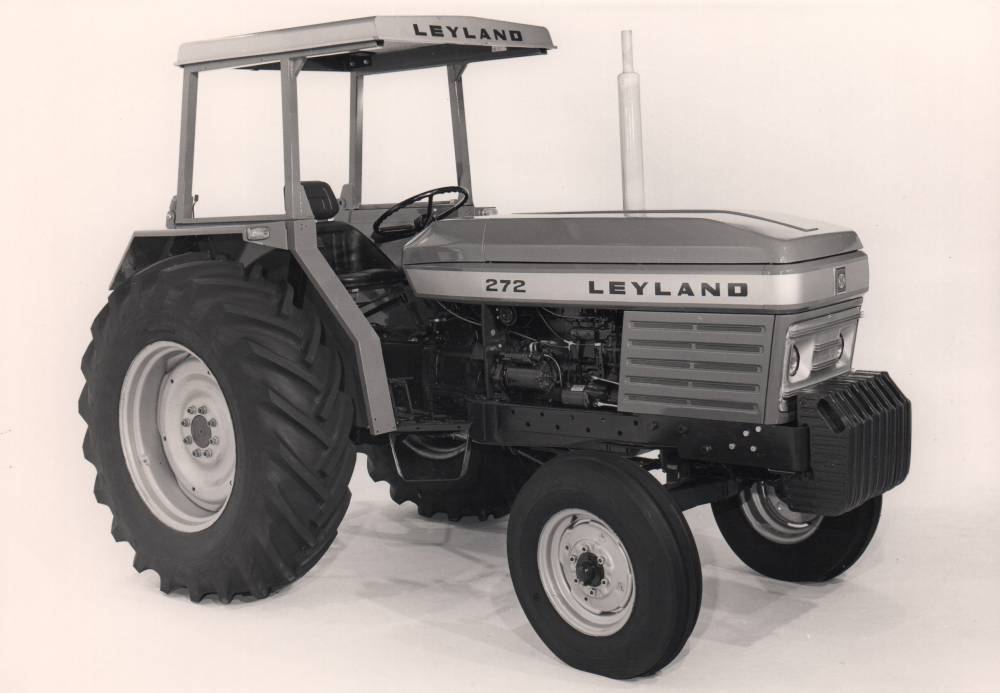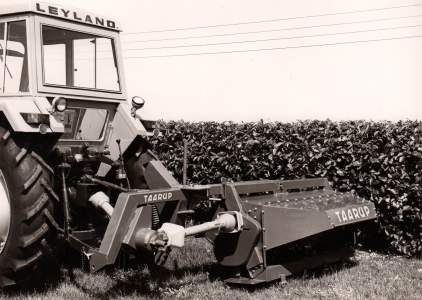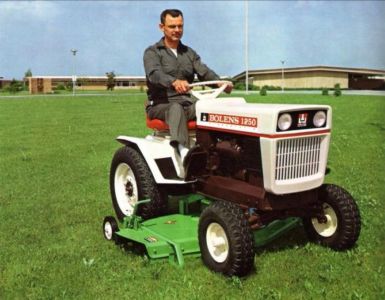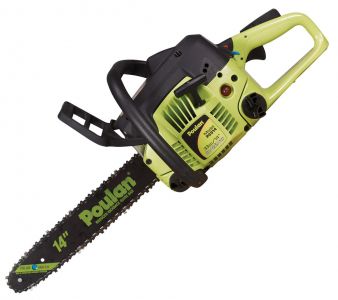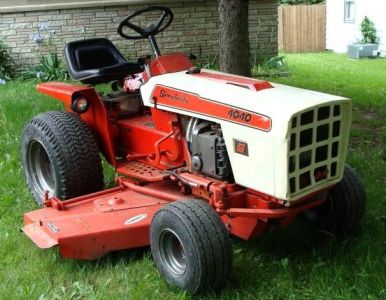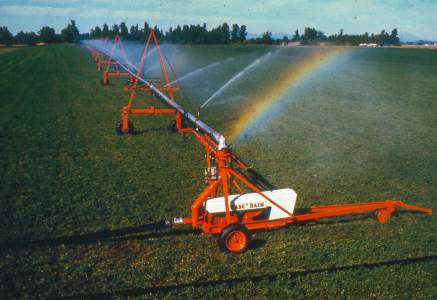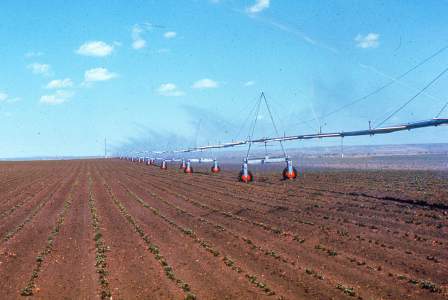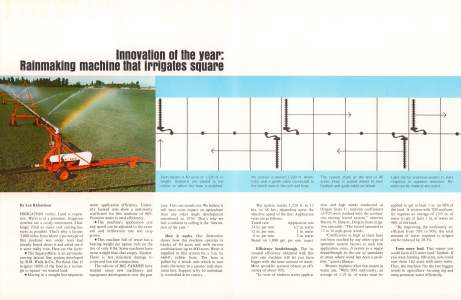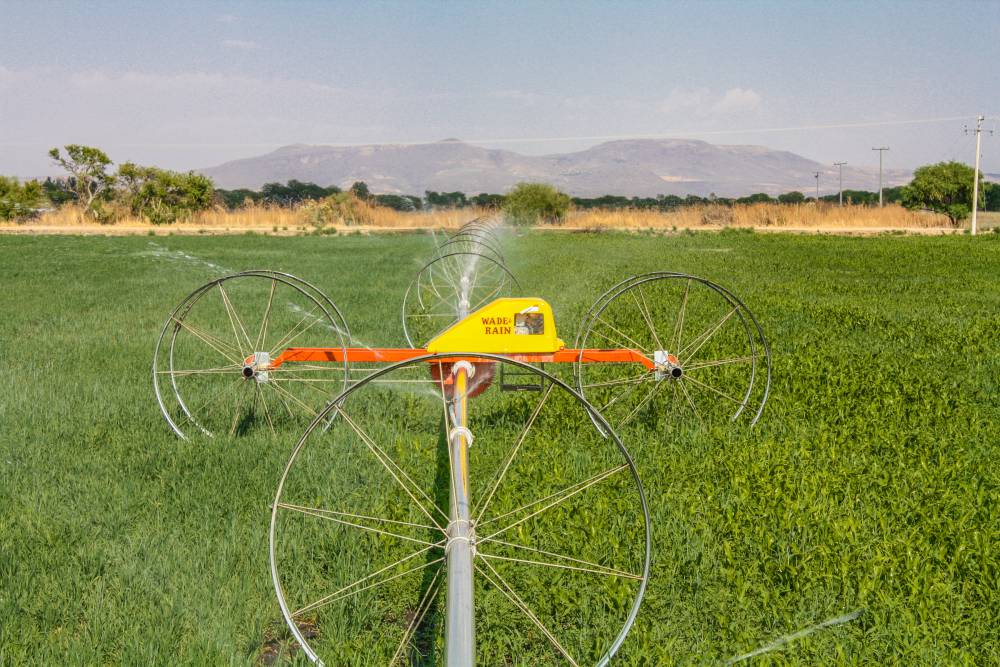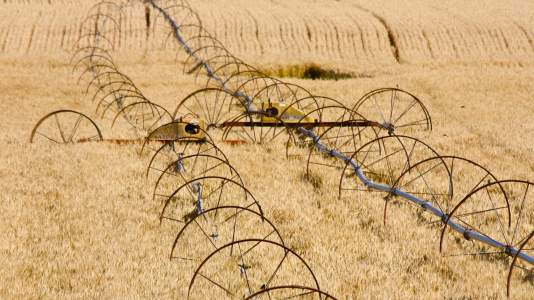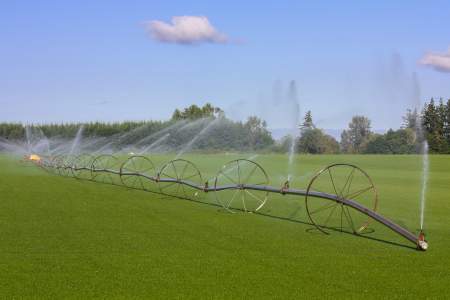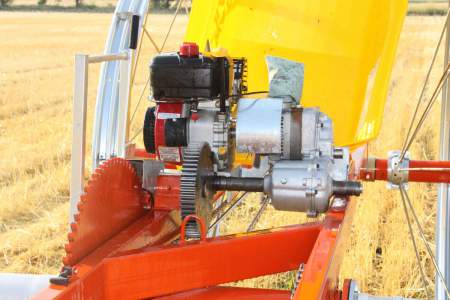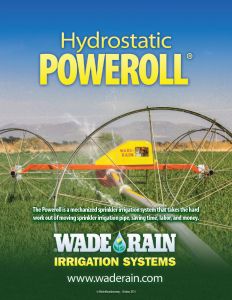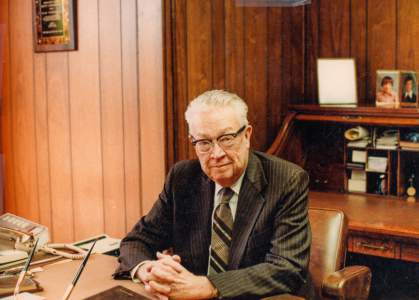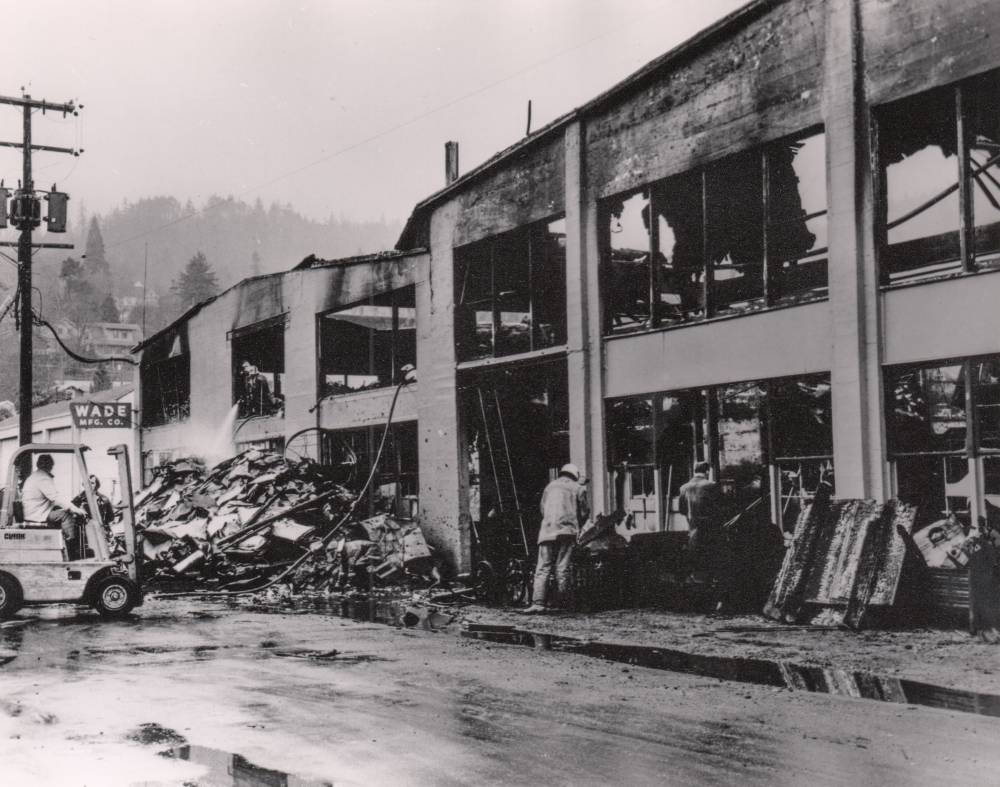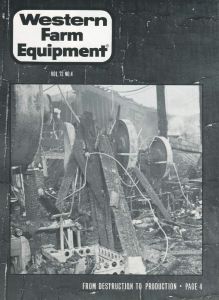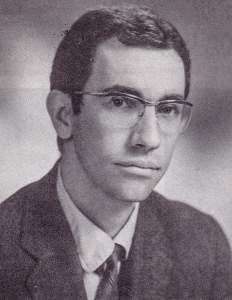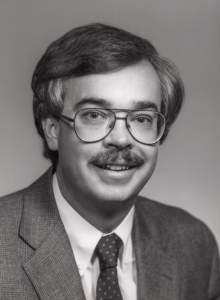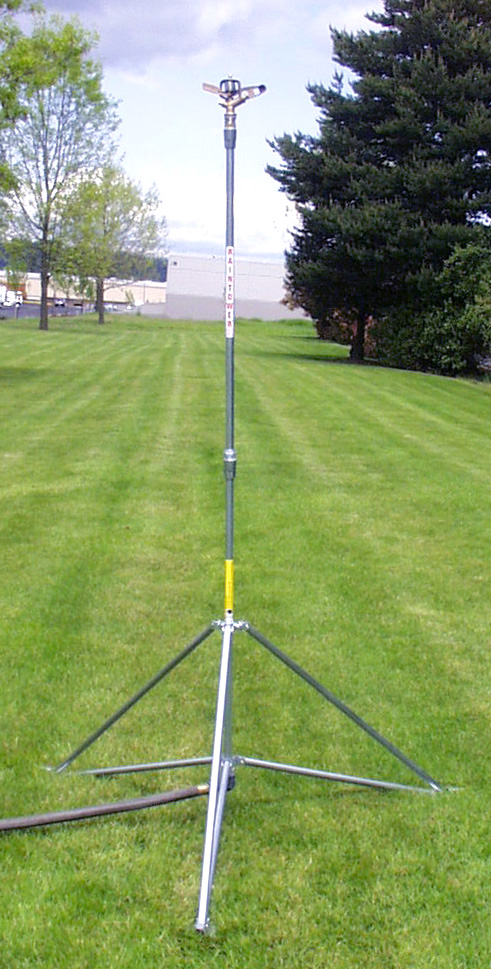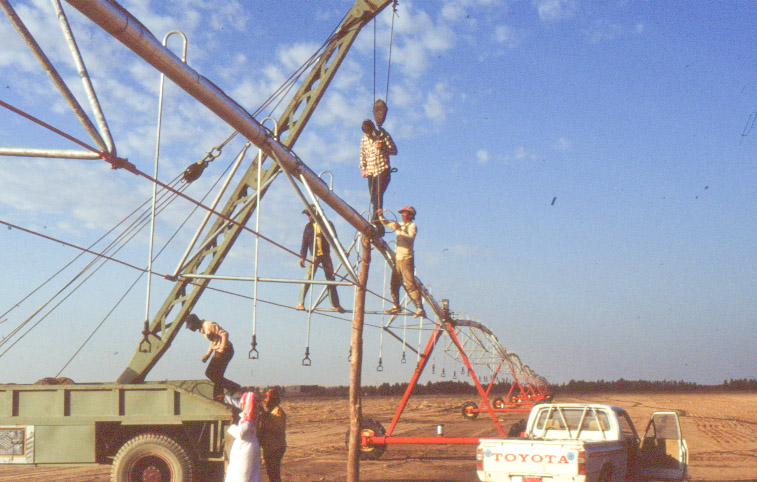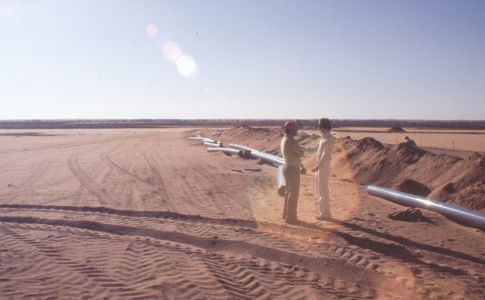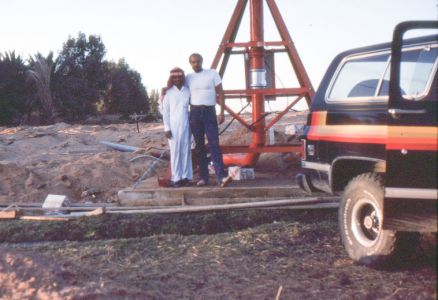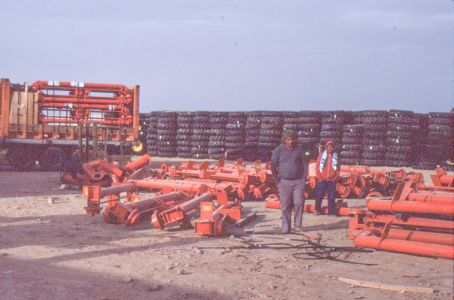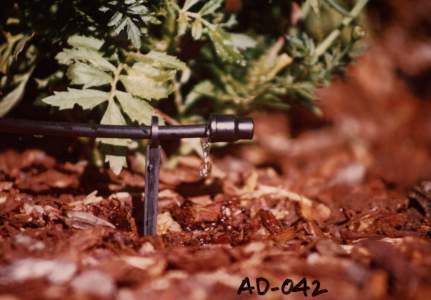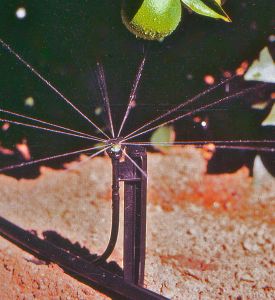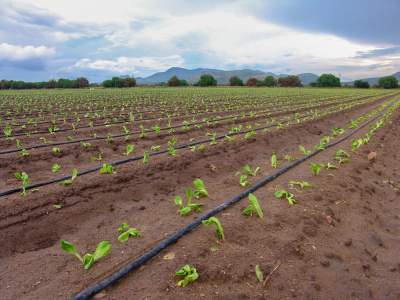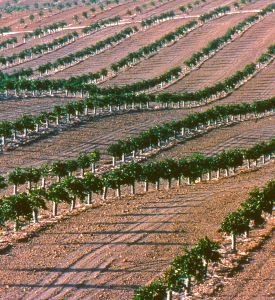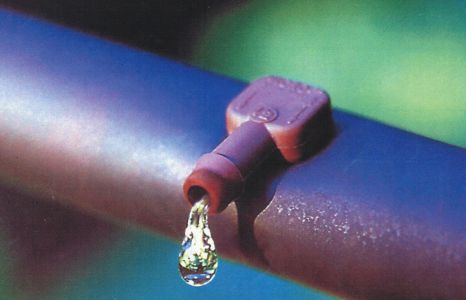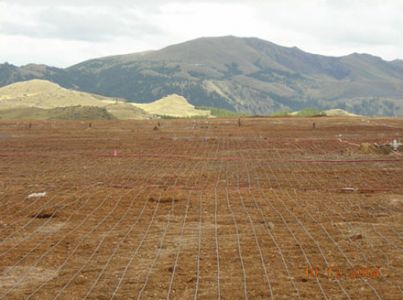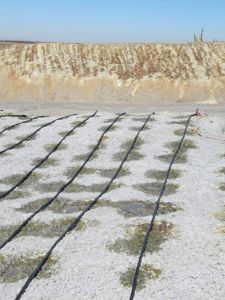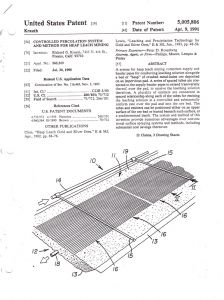Wade Rain Model 70 Poweroll
This time period was marked by moving R.M. Wade Distribution to a new warehouse in Beaverton. Wade Mfg. Co had a disastrous fire in 1975 and later that year opened a new plant in Tualatin. The distribution division entered the new market for outdoor power products and sold the Leyland Tractors. Also the smaller Japanese tractors made by Satoh were very popular. Wade Rain also developed a linear move and automatic center pivot system. As the US agricultural market fell into a serious recession in 1980. Wade Rain focused on the international market experiencing large sales of systems to Saudi Arabia and Egypt. In 1987 Wade Rain entered the drip irrigation business by purchasing a company in Fresno California. In 1987 it was the first company to successfully apply drip irrigation to leach mining, with its new Ore-Max drip systems.
Percentage of Labor Force in Farming in 1970 – 4.6%
1965
Satoh Tractors
Around 1965 R.M. Wade & Co. started importing Satoh tractors from Japan. These were smaller tractors (30 HP or less) that were more suitable for small acreage applications. This tractor line became a big success. The company carried a complete line of implements for these tractors including small versions of rotary cutters and Howard Rotavators. Satoh was eventually bought by Mitsubishi and was sold under that name. One year R.M. Wade & Co. sold over 200 David Brown Tractors and 150 Satoh tractors.
Leyland Tractor
R.M. Wade took on the Leyland tractor which was made by the British Motor Car company. It needed some design changes for the US market. However, British Motor car was reluctant to make these changes and as a result the Leyland Tractors were never very successful in the US market.
That same year R.M. Wade began to sell Tarrup alfalfa mowers which were made in Denmark. The new rotary cutter design was a big improvement in mowers because they could cut faster and did not tend to plug up with alfalfa.
1966
R.M. Wade Enters Outdoor Power Market
During the 1960's there was a growing market for small mowing tractors and other equipment for use by homeowners with larger land areas. Bolens, a manufacturer of what became know as garden tractors approached R.M. Wade Co. with the suggestion that the company become the Bolens distributor for the Northwest. The company took on the Bolens line and it was an immediate success. Other products were added for the outdoor market including products such as chain saws, small implements and even snowmobiles and snow throwers. R.M. Wade carried outdoor power products through the 90's. However, this market depended on hundreds of independent dealers who were eventually replaced by Home Depot and other mass merchandisers.
1970
Squarematic
In 1972 Wade Rain introduced the Squarematic, the first automatic self-propelled linear move irrigation system. The Squarematic won the Big Farmer Innovation of the Year award, however it ultimately was not a successful concept. It turned out that farmers preferred the new center pivot machines because they didn't require any labor. The Squarematic had to be towed at the end of the field, but the pivots never had to be moved because they simply kept irrigating in circles. In 1975 Wade Rain introduced its first center pivot. Today a farmer can irrigate several thousand acres while sitting at home and checking the status of the systems on his computer.
1971
Model 70 Poweroll
Wade Rain introduced the Model 70 Poweroll mover, the first hydrostatically powered drive unit for wheelines. The hydrostatic transmission was adapted from the same unit used by Bolens in one of their garden tractors. It was a perfect adaptation of the this type of transmission because it allowed the farmer to use the equivalent of "low gear" in driving the unit through heavy mud. Previously there had only been one gear and one speed.
Over 40,000 Model 70 Poweroll Systems have been sold over the years. It is still the most popular wheeline available.
1972
Moved to Beaverton
December, 1972
In late 1972 R.M. Wade & Co. was notified by the state highway department that there would be an off ramp for the new Fremont Bridge right over the building on Thurman Street. This meant the company needed to find another home. Wade Newbegin Jr. began looking for a new location immediately. Coincidentally Allis-Chalmers, a farm equipment company, had decided to shut down their warehouse operation in Beaverton. The building fit the needs of R.M. Wade perfectly and later that same year the company moved to Beaverton. The Beaverton building accommodated the distribution office and warehouse, the entire sales department for both distribution and Wade Rain, and the corporate headquarters. Ironically the off ramp over the Thurman warehouse was never built because of the objections of nearby residents.
1975
Fire Destroys Wade Mfg. Co
January 22, 1975
A fire destroyed the manufacturing plant in NW Portland just before the beginning of the 1975 irrigation season. It was a total loss and all inventory was destroyed in addition to the building. The roof had collapsed on the machinery, but fortunately the production dies were undamaged. Through the tremendous efforts of the company production group the company was back in business within 30 days, manufacturing at a temporary warehouse located nearby. Everyone pitched in and worked hard to save the company. It was the largest business fire loss in Oregon in 1975.
New Wade Mfg. Plant Opens in Tualatin, Oregon
November 1975
Following the fire the decision was made to relocate Wade Manufacturing to acreage owned by the company in Tualatin. Construction began in May and was completed by October of the same year. The company moved in during November and started operations almost immediately. This building remains the current headquarters of Wade Rain.
1977
Wade Credit Formed
In 1977 the business established a financing company called Wade Credit. The purpose of the company was to provide financing for dealers, who wished to purchase equipment from R.M Wade. It worked very well and operated for over 15 years.
1980
New Generation of Leadership
In 1980 Wade Newbegin Jr. was appointed President of R.M. Wade Distribution Co. and Edward H. Newbegin was appointed President of Wade Rain Inc. Wade Newbegin and Edward Newbegin are the great-grandsons of company founder, Robert M. Wade.
Raintower Consumer Sprinkler
About 1980 Lloyd Olson, a Wade engineer saw a need for a single tall sprinkler stand for consumers. He designed the product that became known as the Raintower. It was very successful and was sold by Walmart throughout the United States. Hundreds of thousands were sold to consumers for the purpose of watering corn and other tall plants in domestic gardens on small plots of land. It has become the quality standard for "tall sprinklers" and is still sold today. It stands six feet tall and waters 7,000 square feet at a time.
1981
Pivot Projects in Saudi Arabia
1981-1985
In 1980 the government of Saudi Arabia decided the country should become self sufficient in wheat production. There was a tremendous demand for irrigation systems to produce the wheat. Wade Rain exported hundreds of center pivot systems to Saudi Arabia.
Below are pictures of Wade Rain's operations in Buraydah, Saudi Arabia. At one time the company had over 100 pivots in stock in Saudi Arabia.
Hard Times Hit the American Farmer
1981-1987
The US agricultural market suffered one of its worst recessions from 1981-1986. It was the result of over borrowing by farmers during the 70's when times were much better. Commodity prices dropped to unprecedented levels and farm income fell almost 75%. The result was that farmers who had mortgaged their land could not make the payments on their loans and hundreds of thousands of farms were repossessed during this time period. There were Farm Aid concerts throughout the country to raise money to help destitute farmers and their families. Farmers simply stopped buying equipment and every single major farm equipment manufacturer except John Deere went into bankruptcy or was sold to avoid it. In addition the independent farm equipment dealers could not survive the depression because there were no customers to buy from them. Consequently there was a dramatic decline in the farm equipment distribution business. As a result R.M. Wade & Co. downsized its distribution business to a much smaller operation.
1987
Wade Rain Enters the Drip Irrigation Business
For years the drip irrigation segment of the industry had been growing and taking more of the market from sprinklers. Drip irrigation was first invented in Isreal and it applies water very slowly in small quantities. It is the most efficient way to irrigate and plants do much better when the water is applied in small quantities because the oxygen in the soil remains available to the roots. We decided that Wade Rain should develop or acquire a drip manufacturing company, and the opportunity came up to buy the Irridelco Drip Company in Fresno. It had a good product line but sales had been declining. We bought it in the fall of 1987 and were able to turn it around and make it profitable in 1988. The plant operated 24/7 during most of the years we owned it and employed up to 150 people.
1988
Wade Rain enters the Leach Mining Industry
For many years the copper and gold industries in their leach mining operations had used sprinklers to apply the leaching chemicals. This was an inefficient and environmentally harmful process because the sprinkler spray would drift beyond the mine and also it would cause puddling and blow outs at the mine. Rick Krauth an inventor working for the Fresno Division first applied drip tubing to a mine in Nevada, in December of 1987. It was very successful and within a year most of the gold mines had converted to using drip instead of sprinklers. We called our new product line Ore-Max. It resulted in more ore production and eliminated the adverse environmental effects of sprinklers.
This innovation revolutionized leach mining practices and made them environmentally safe and increased production at the mines. RM Wade was awarded a method patent for applying drip irrigation on mines and also received special recognition from the patent office for a product which improved the environment. All leaching operations are done in an area completely sealed off by a plastic liner to prevent any solution from escaping. Wade still sells Ore-Max to mines around the world.
